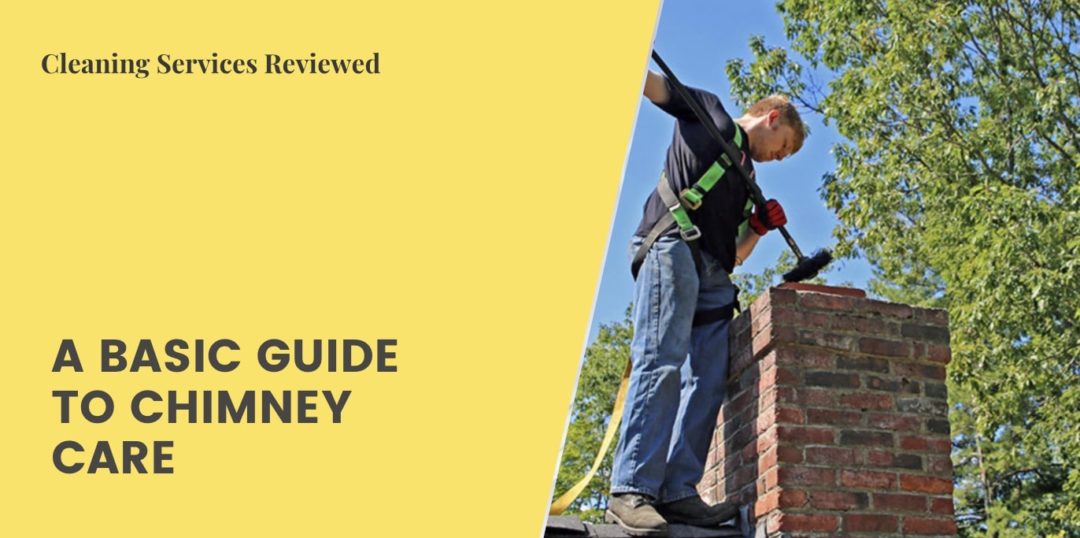Chimney cleaning is a specialized line of work that requires experience and training. Thus, it’s still best to leave it to the pros for fault-finding and complete cleaning once a year.
Having said that, you can also do some maintenance yourself to keep your chimney working freely through the flue. This prevents dangerous house fires due to soot, creosote buildup, and blockages.
So, here’s a basic guide to chimney care in which we’ll walk you through the entire process from sourcing materials to cleaning the chimney.
All set? Let’s go on!
1) Get the Right Chimney Cleaning Tools

Here are the tools and materials you’ll be needing to clean the chimney yourself:
- Dust mask
- Drop cloth
- Duct tape
- Plastic sheeting
- Flashlight
- Safety glasses
- Safety harness
- Flue liner brush
- Noodle brush
- Long-handled brush
- ShopVac (HEPA-rated)
Note that the flue liner brush will depend on the kind of flue liner you have. Use a metal brush for clay-type flues and a plastic brush for metal flue liners.
Also, get enough long rods so you can finish the chimney cleaning task on the roof. Keep in mind, though, that flue sizes may vary so you must first measure the height of your flue liner.
2) Buy certain brushes to clean from the fireplace

You will do some cleaning not just from the roof but from the inside of your house.
You’d need a flexible noodle brush to remove the debris and contaminants in the smoke shelf and chamber. For brushing off ash and dirt inside the firebox, you’ll also need a long brush.
3) Cover your firebox to protect your home interior

Chimney cleaning is bound to get messy, so you’ll have to widely lay a canvas tarpaulin on the floor, as well as cover the front of the fireplace with plastic sheeting.
Insert a vacuum through the plastic to absorb the dirt and debris that falls down during the work. Then, use duct tape to connect all of their sides.
4) Extend the vacuum hose so it vents to the outside

Now, you need to put the vacuum outside along with the hose extension. While you’re brushing the chimney, soot and debris will go from the flue liner to your fireplace, and to the outside.
If your vacuum cleaner hose’s length isn’t enough, you could pick up extra compatible hoses at a nearby hardware store.
Note that the filter may not be able to trap all dirt, soot, and small particles, and thus, they may go right out the exhaust vent of your vacuum.
Also, don’t forget to close the doors and windows so the vented-out contaminants won’t come back into your house.
5) Clean Your Chimney

After doing those steps, you’re now ready to clean your chimney.
Start by turning on the ShopVac, set and climb up the ladder to your roof.
Attach a rod to the brush securely and lower it down the flue. You can add rods as the brush goes deeper into the flue.
Push and pull the brush repeatedly in a small part of the flue to remove the soot and dirt.
Check your work by directing your flashlight at the flue liner. Go on from cleaning one part of the chimney to another.
When you feel that you’ve reached a dead-end in the bottom part of the flue, that must be the smoke chamber. Clean it thoroughly, and once done, detach each rod as you pull up the brush, and go back inside the house to continue the cleaning.
Remove a portion of the plastic sheeting on the firebox. Use the noodle brush to clean the smoke chamber and smoke shelf, and take the long-handled brush to dust out the firebox’s side.
All that’s left now is the tidying up so vacuum up the rest of the debris and dirt you see. Fold the plastic sheeting and tarpaulin in a way that will minimize the mess in the room.
Finally, take them outside, clean them up a bit, but don’t throw them away. Next time, when you clean the chimney again, you can reuse them so that you’ll reduce your impact on the environment.



